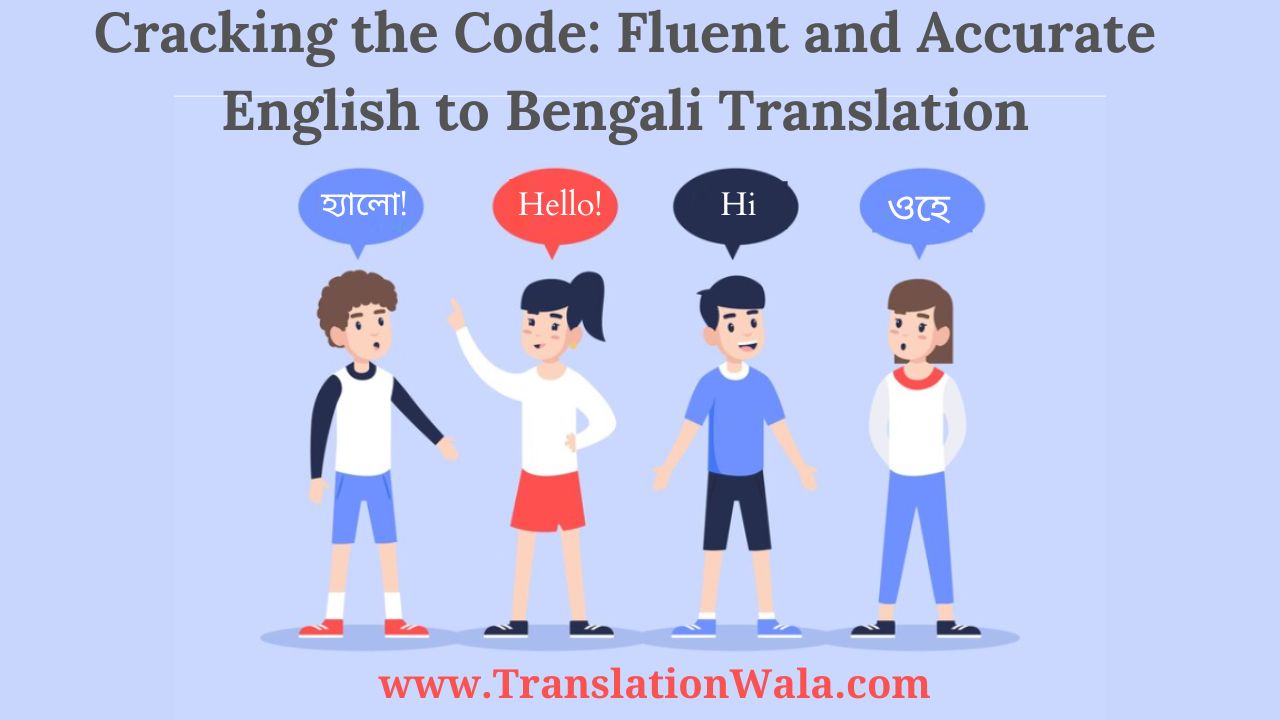English to Bengali Translation: It can be hard to communicate between people who speak English and people who speak Bengali. At first glance, it might look like all that needs to be done is to change the English words to their Bengali versions. But there are many more subtleties to language than just replacing words. To really be able to translate quickly and correctly, you have to look deeper and understand the complicated issues that are hidden below the surface.
This piece goes into detail about the difficulties and methods needed English to Bengali Translation. It has useful information for both new and experienced translators.
Understanding the Nuances: Beyond Word-for-Word Substitution
The biggest mistake you should try to avoid is taking words at face value. There are big differences between English and Bengali when it comes to sentence form, language rules, and cultural connections. When translating Bengali word-for-word, words often sound odd and not natural.
Consider the following example:
English: The quick brown fox jumps over the slow dog.
Literal Bengali Translation: Don’t be lazy, kachhe khairo banshi langoi jay.
This exact translation is correct in terms of the words used, but it sounds strange and awkward in Bengali. This would sound more normal and be better for grammar:
Natural Bengali Translation: It’s hard to say no to a banshi lompe aar aalshe kutta-ke.
This new version changes the order of the sentences to match Bengali language and uses the right verb form (“lompe” instead of “langoi jay”).
Also Read: Fostering Cultural Exchange: English to Gujarati Translation as a Bridge between Communities
Cultural Considerations: Bridging the Gap between Worlds
There is a strong link between language and society. Many idioms, proverbs, and statements that are unique to one culture don’t have clear translations in another. Misunderstandings and wrong ideas can happen when you translate these kinds of things directly.
For example, “kick the bucket” in English exactly means “balti thoka” in Bengali. However, this exact version doesn’t mean anything to someone who speaks Bengali. “Mara jayna” (to die) would be a better version that gets to the heart of the saying.
Because of this, a good translator needs to know a lot about both the English and Bengali cultures. This lets them spot and deal with cultural gaps.
Strategies for Successful Translation:
- Embrace the Power of Paraphrasing: As we’ve already talked about, word-for-word translation often leads to wrong and artificial results. By paraphrasing, the translation can correctly express the original meaning while following the sentence structure and grammar rules of the target language.
- Utilize Bilingual Dictionaries, But Don’t Rely Solely on Them: It’s good to have bilingual books, but they shouldn’t be your only source of truth. They might not fully understand what a word or term means, and societal differences could be missed.
- Consult Subject-Specific Resources: It is very important to use subject-specific dictionaries and terms sources when translating expert content like court papers or medical reports. This makes sure that the translated text is correct and well-written.
- Leverage Technology, But With Caution: The tools for machine translation have come a long way, but they are still not perfect. They can help with first drafts or getting the main idea of a text, but using them alone can cause mistakes and wrong information to be found.
- Proofread and Edit Rigorously: It’s very important to carefully review and edit the translation after it’s done. This means looking for typos, spelling mistakes, and other problems with the translated text and making sure it reads easily and moves well.
Conclusion: The Art and Science of Translation
The process of English to Bengali Translation is complicated and needs a mix of language skills, culture knowledge, and an understanding of the audience. Translators can successfully bridge the language gap by using the above tactics, which can help people from different backgrounds communicate and understand each other better. Remember that translation is both an art and a science, and the key to success is finding the best mix between correctness and ease of use.
